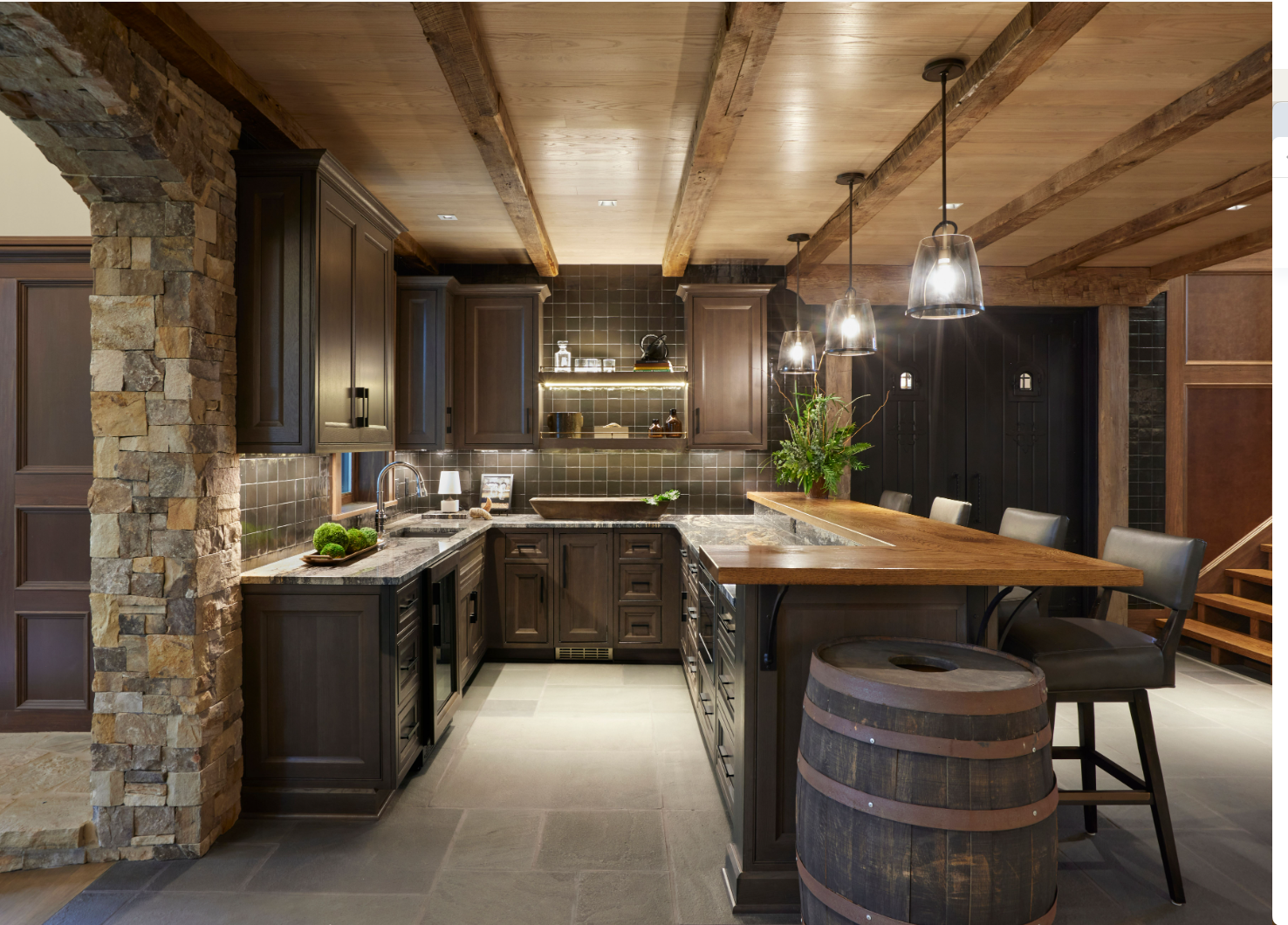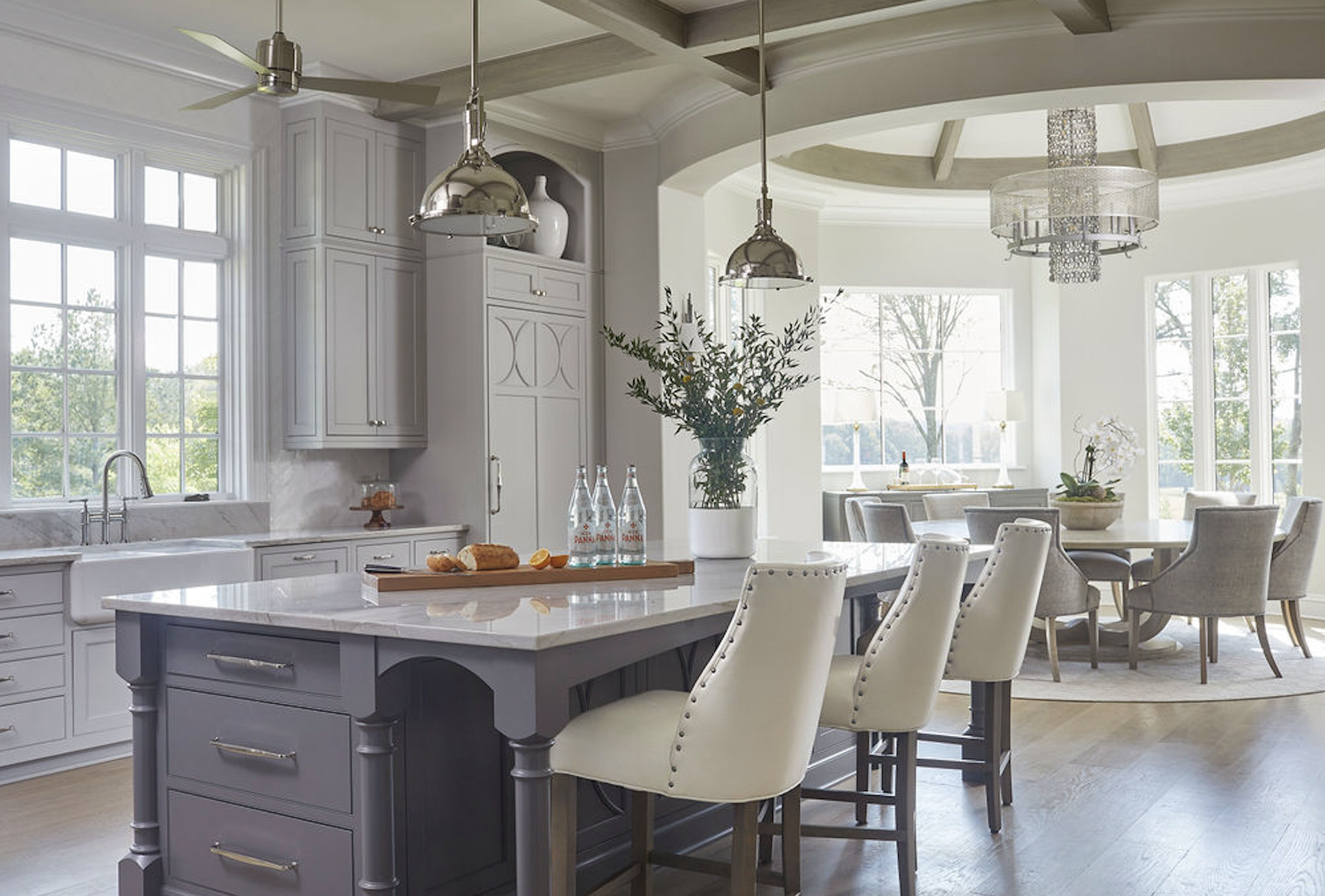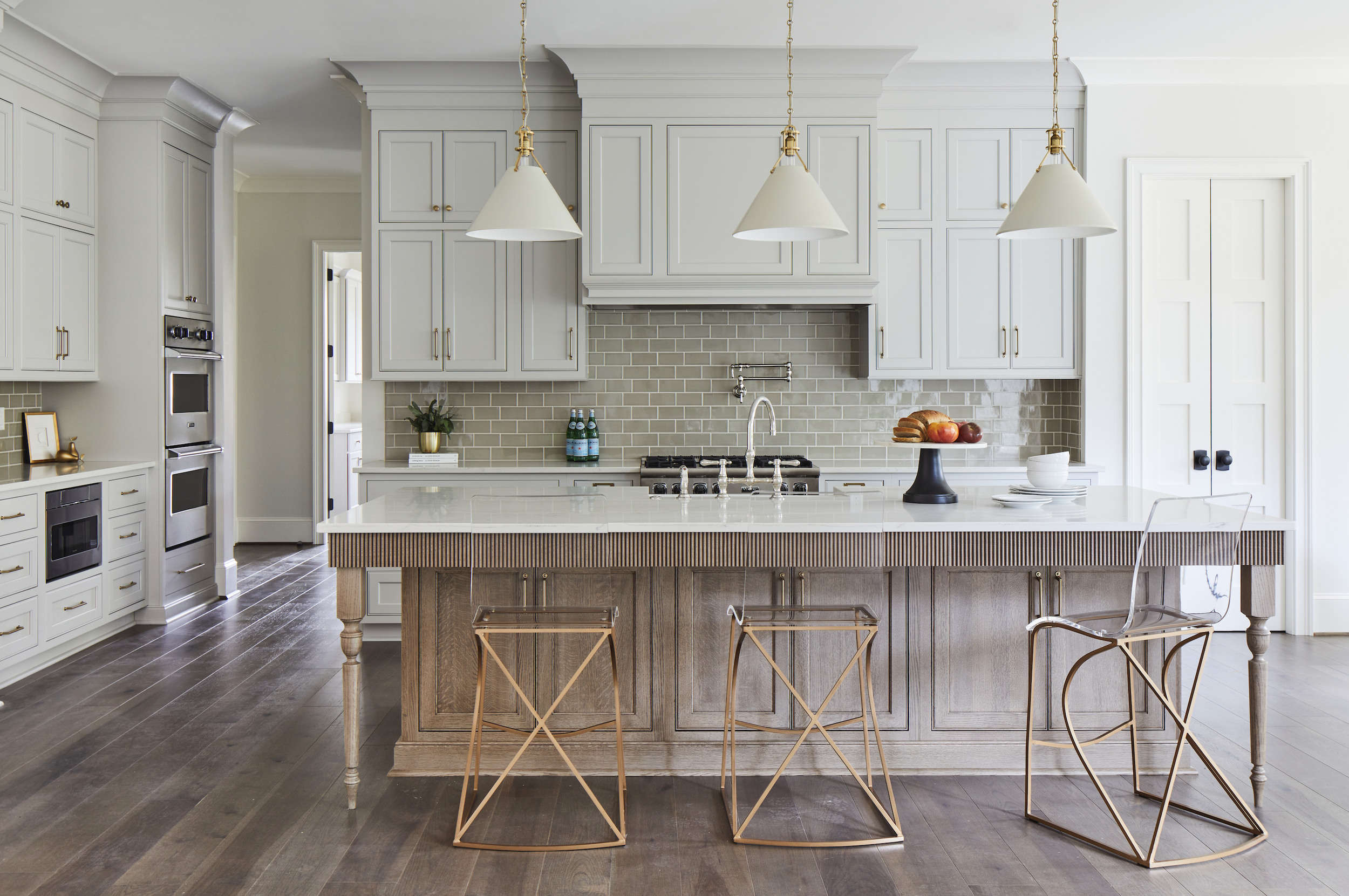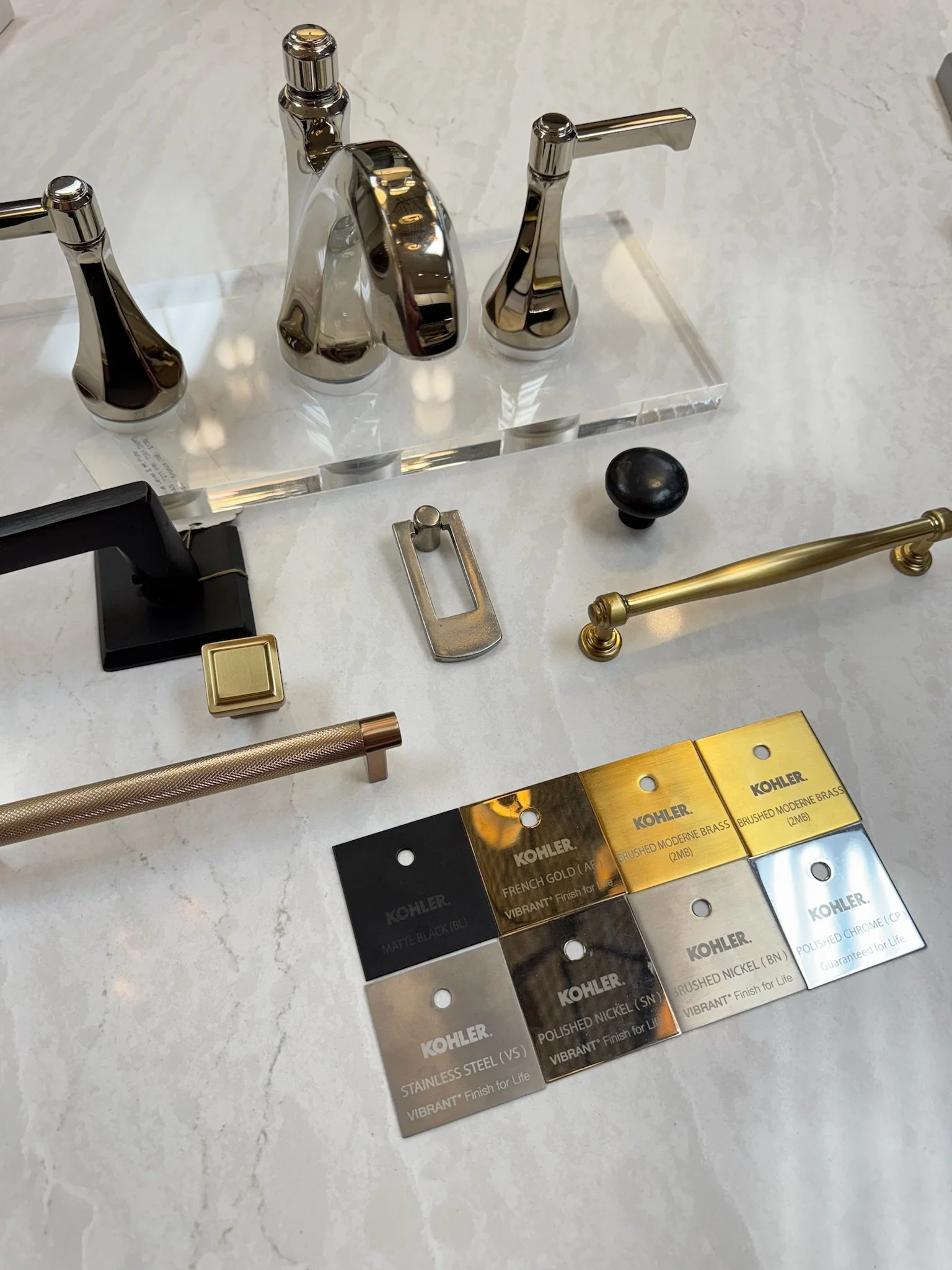Why Homeowners Love Mixed-Material Kitchens (And How to Pull It Off)
If you’ve ever walked into a kitchen that stopped you in your tracks—the kind that feels polished but still lived-in, luxurious but not cold—there’s a good chance you were experiencing the magic of mixed materials. This design trend has taken hold in Tuscaloosa, Birmingham, Mountain Brook, and beyond, and for good reason: layered textures and finishes make a kitchen feel more like a custom-crafted space than a builder-grade box.
And here’s the best part: mixed-material kitchens aren’t just beautiful. They’re incredibly functional, intentional, and flexible—so you can create a look that feels personalized to your home, lifestyle, and design style. Whether you prefer classic warmth, modern minimalism, or bold statement kitchens, the possibilities are truly endless.
But knowing where to start—and how to blend materials without going overboard—can feel overwhelming. That’s exactly why our design pros at Toulmin Kitchen & Bath pulled together everything you need to know to confidently pull off the mixed-materials look. From choosing the right combination of finishes to creating cohesion throughout your space, we guide you through every decision to ensure your kitchen feels purposeful, balanced, and beautifully custom.
What Is a Mixed-Material Kitchen?
A mixed-material kitchen blends different finishes, textures, colors, and materials within a single design. Instead of matching everything, you intentionally contrast surfaces to create visual depth and personality.
A few classic combinations include:
Wood + Painted Cabinetry
Stone + Plaster Hoods
Metal + Natural Wood Accents
Matte + Glossy Finishes
Smooth Countertops + Textured Seating or Shelving
The goal is simple: balance beauty and function while creating a kitchen that feels curated—not chaotic.
The Design Principles Behind Mixed Materials
Mixed-material kitchens work because they’re grounded in smart design. Here’s why they’re so effective:
1. Contrast Adds Visual Interest
When everything matches, nothing stands out. Using contrasting finishes—like a stained wood island with soft white perimeter cabinetry—helps anchor the room and draw the eye to key features.
2. Layers Create Warmth
Tuscaloosa and Birmingham homeowners often want kitchens that feel inviting, not sterile. Wood tones, textured hardware, natural stone, and layered lighting soften crisp cabinetry and bring comfort into the space.
3. Materials Help Define Zones
Open-concept homes benefit tremendously from material changes. A walnut island can signal the cooking zone, while a plaster hood highlights the range wall. These subtle shifts help large rooms feel organized and thoughtfully planned.
4. Mixing Finishes Makes a Kitchen Feel Custom
Using just one finish often reads “builder-basic.” Mixing cabinetry door styles, countertop materials, or metal finishes creates a high-end, tailor-made aesthetic that reflects your personal style.
Remodeling a Kitchen?
Check out the kitchens we’ve designed and built in Tuscaloosa, Birmingham, Vestavia Hills, Crestline and Mountain Brook. Get inspiration for your project!
How to Pull Off a Mixed-Material Kitchen, Without Overwhelming the Space
Choose One Dominant Material
Start with a primary finish—usually cabinetry—then layer in complementary elements like hardware, lighting, and accents.
Limit Yourself to 2–3 Wood Tones
Warm oak, stained walnut, and painted cabinetry can coexist beautifully, but more than three tones can feel busy.
Use Metals Intentionally
Mixed metals (like brass + matte black) are stunning when done right:
Brass warms up cool color palettes
Black adds contrast
Polished nickel leans classic and timeless
Just keep a unifying element—for example, using brass in both the lighting and cabinet hardware.
Balance Texture with Clean Lines
If your countertops have dramatic veining, choose a simpler backsplash. If your hood is plaster, consider a subtle cabinet door style. Balance ensures the space feels curated, not chaotic.
Anchor the Room with the Island
In mixed-material kitchens, the island often becomes the star:
Dark island with light perimeter cabinetry
Waterfall stone countertop on a smooth-painted base
Stained island paired with reconstituted veneer cabinetry on the perimeter
This creates instant depth and a designer feel.
Functional Benefits You’ll Actually Notice
Better Flow in an Open-Concept Home
Open layouts are beautiful, but without visual boundaries, everything can start to blend together. Mixed materials solve that problem instantly. By using a different island finish, countertop material, or backsplash style, you can subtly “zone” the space so each area feels intentional. For example, a warm wood island can cue the gathering space, while a sleek stone perimeter signifies the cooking zone. No walls required. It’s one of the easiest ways to add structure, balance, and flow to a kitchen that opens into the living or dining area.
Enhanced Durability Where It Matters Most
Not all materials are created equal. And the beauty of a mixed-material kitchen is that you don’t have to choose just one. You can place your most durable, hard-wearing surfaces exactly where you need them. Think natural stone or quartz for high-traffic areas, heat-resistant surfaces near the range, and softer or warmer finishes where your family gathers. This strategic mix not only elevates the look of your kitchen but also ensures the space holds up beautifully to daily use.
Highlight Architectural Details Instead of Hiding Them
If your home has standout features like exposed beams, custom vent hoods, and arched doorways, mixing materials gives you the perfect opportunity to celebrate them. A plaster hood paired with walnut cabinetry becomes a statement piece. A mixed-metal chandelier draws the eye upward to vaulted ceilings. Even something as simple as pairing textured backsplash tile with smooth marble can showcase the craftsmanship of your space. The right mix doesn’t just complement architecture—it elevates it.
Improved Comfort, Sound, and Overall Livability
Large kitchens and open-concept homes often struggle with echoing and sound bounce. Incorporating a variety of materials, such as wood accents, textured barstools, upholstered seating, and layered lighting, softens noise and makes the room feel more inviting. These tactile elements warm up modern spaces and create the comfortable, lived-in feel so many homeowners love. It’s a bonus you don’t always think about, but once you experience it, you’ll never want to go back to a one-texture kitchen.
FAQ: Mixed-Material Kitchen Design
How many materials is “too many”?
A good rule of thumb: choose one dominant material and two to three supporting ones. More than that can feel visually cluttered.
Do mixed materials work in small kitchens?
Absolutely. In fact, strategic contrast can make a small kitchen feel more spacious and intentional.
Can I mix metal finishes?
Yes—when done with purpose. Keep finishes consistent by category (ex: all hardware in brass, lighting in black).
What if my home is traditional or historic?
Mixed materials work beautifully in historic homes. Warm woods, aged brass, and classic marble blend seamlessly with traditional architecture.
Is this a trend or something timeless?
Mixed-material kitchens have staying power. They feel timeless because they mimic the way real homes evolve—layered, collected, and lived-in.
Design Your Mixed-Material Kitchen in Tuscaloosa or Birmingham
Our Tuscaloosa and Birmingham design teams make it easy to blend wood, stone, and custom cabinetry for a kitchen that feels uniquely yours.
Bring the Mixed-Material Look to Your Home with Toulmin Kitchen & Bath
If you’re dreaming of a kitchen that feels fresh, layered, and customized, our design team at Toulmin Kitchen & Bath would love to bring your vision to life. From cabinetry selection to material pairings, layout planning, and installation, we guide you through every step of the design-build process. Schedule your design appointment with Toulmin Kitchen & Bath today.
Call us at (205) 579-8392 or book a free consultation online.
You May Also Like…
Find more kitchen and bath inspiration from our design experts at Toulmin Kitchen & Bath.










